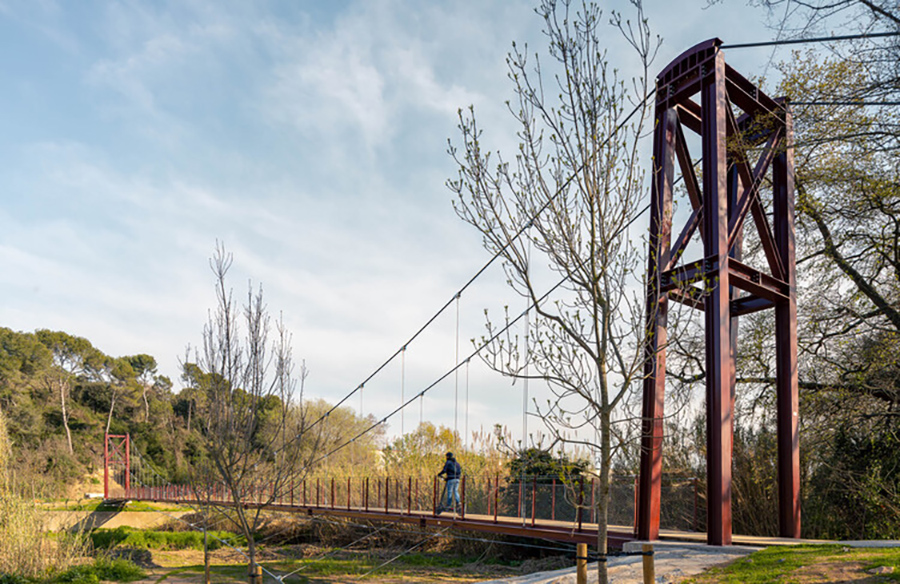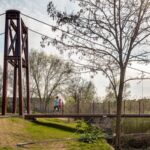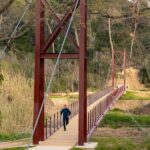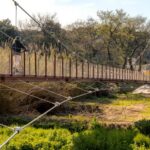Introduction
The footbridge over the Ripoll River serves as a vital link, connecting not just two points but also urban and natural landscapes. Designed by Infraestructures de Muntanya and JBP Enginyeria, this architectural marvel seamlessly integrates into its surroundings while providing pedestrians with a safe and scenic pathway.
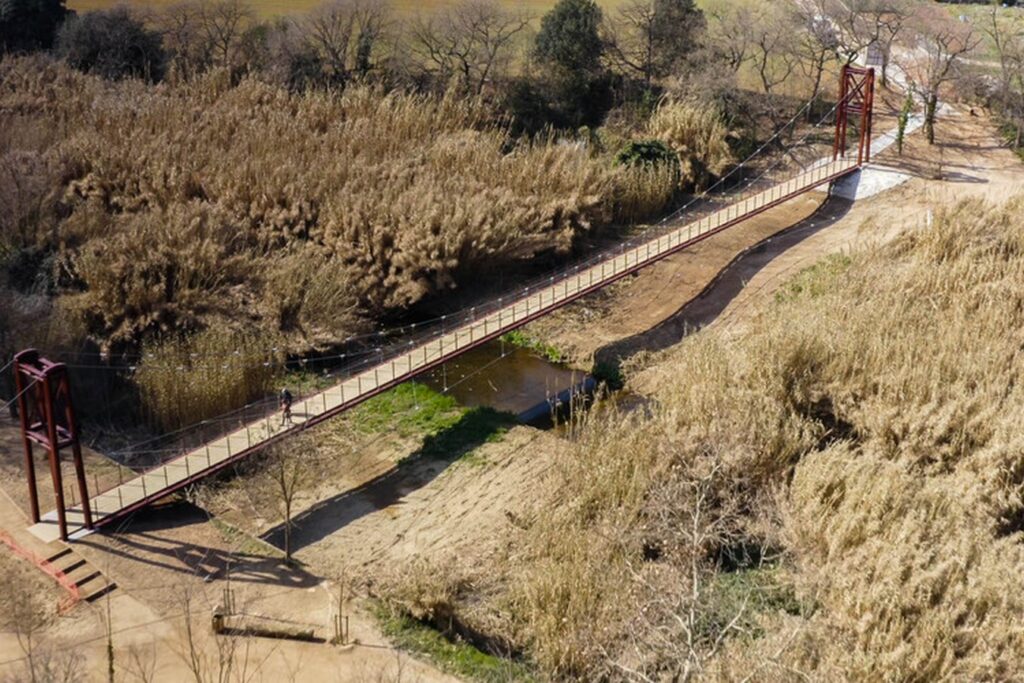
Project Overview
Stretching across the Ripoll River, this hanging metal footbridge links the Molí Vermell wetlands and the urban center on the right bank with the Castell de Barberà and the green ring of the municipality on the left. It spans an impressive distance of 84 meters, offering ample space for pedestrians to traverse. With a width of 2 meters and a height of up to 5 meters above the river, the footbridge provides both functionality and aesthetics.
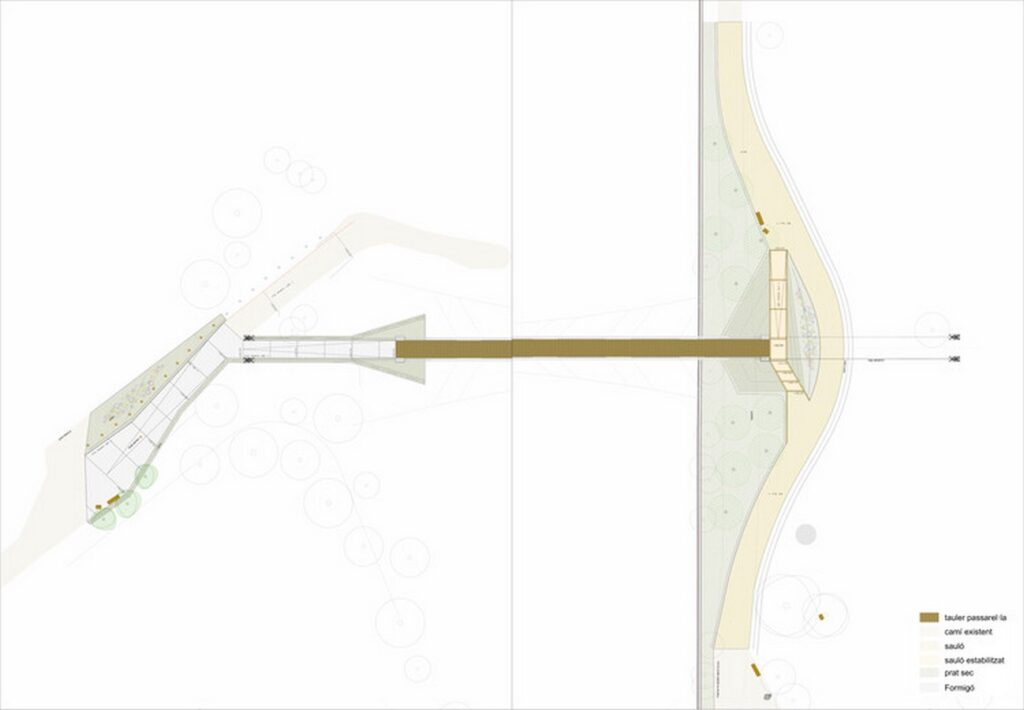
Design Features
Structural Specifications
Supported by two towering pillars standing 9 meters tall and anchored by main steel cables, the footbridge boasts structural integrity and stability. Its robust design ensures the safety of pedestrians while offering unobstructed views of the surrounding landscape.
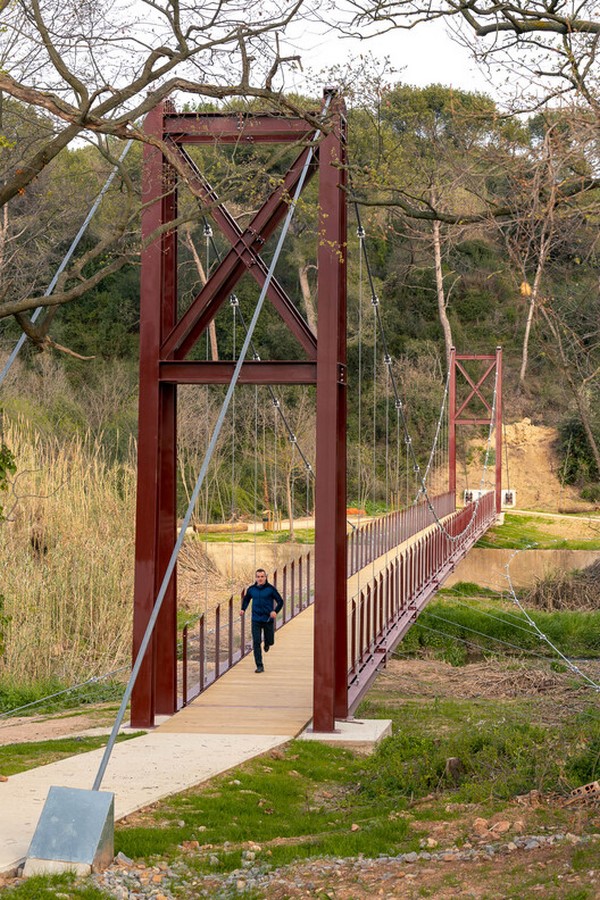
Integration with the Environment
The design of the footbridge is carefully crafted to blend seamlessly with the natural environment. Concrete ramps provide easy access to the bridge, while remaining integrated with the vegetation and topography of the area. This thoughtful integration ensures that the footbridge enhances rather than disrupts the surrounding ecosystem.
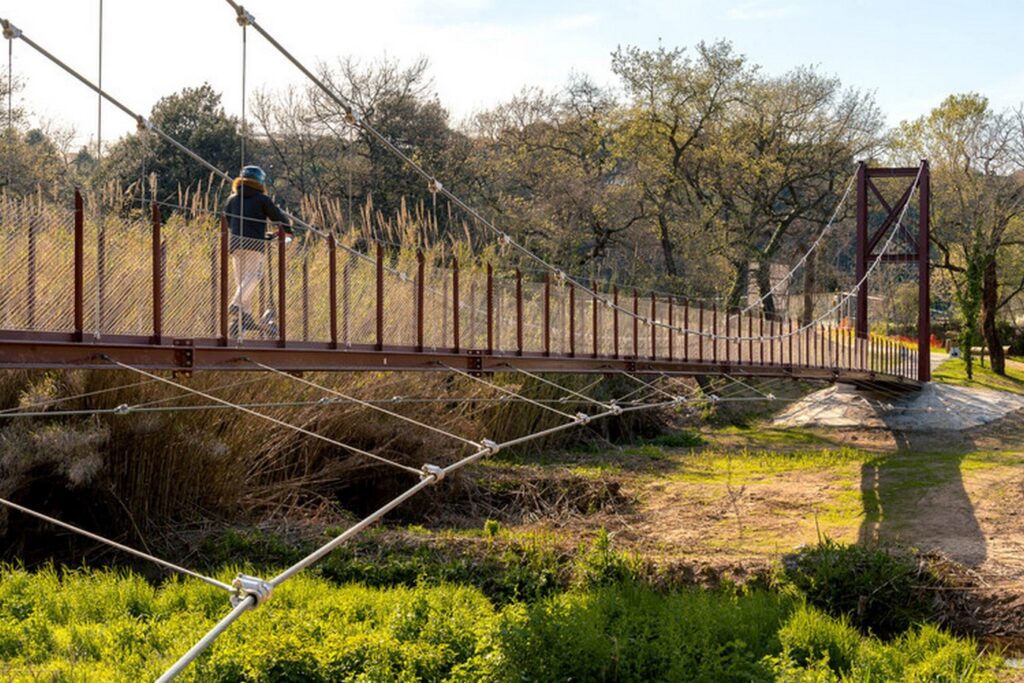
Conclusion
In conclusion, the footbridge over the Ripoll River is not merely a means of crossing from one side to another but a symbol of connectivity and harmony. By bridging the gap between urban and natural landscapes, it encourages exploration and appreciation of the municipality’s scenic beauty. As a testament to innovative design and engineering, this footbridge stands as a beacon of connectivity and sustainable development.


